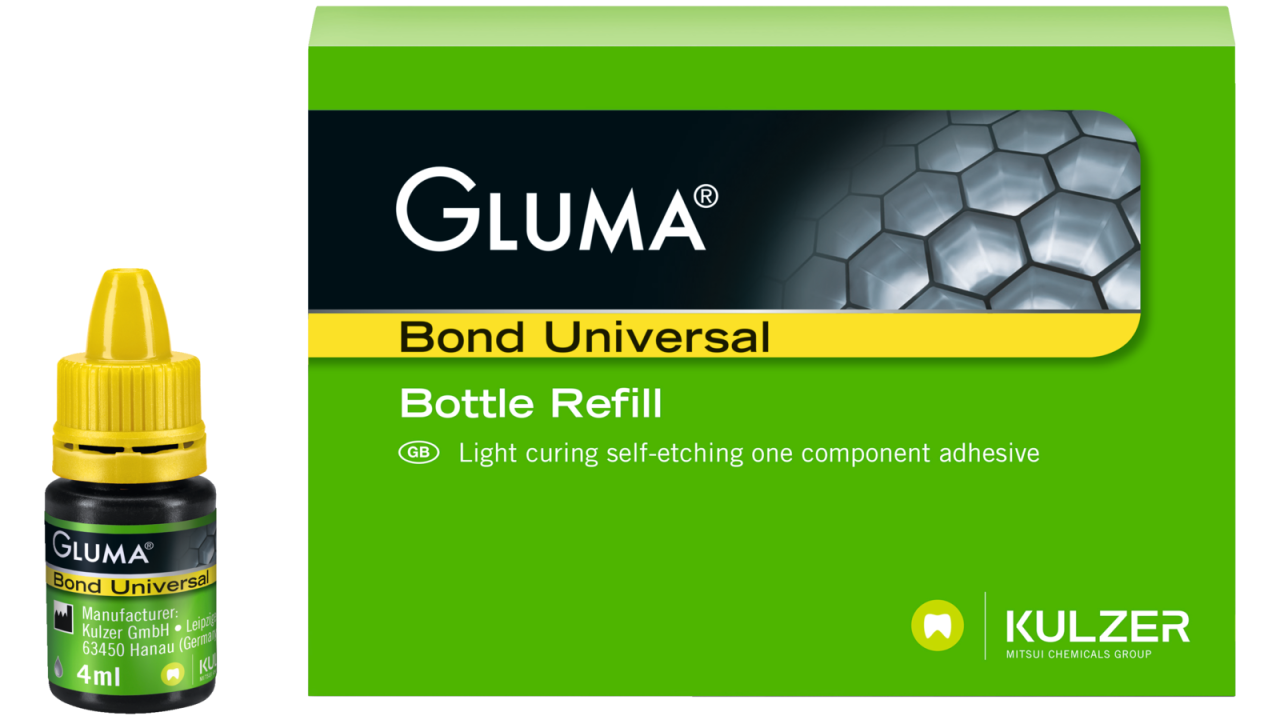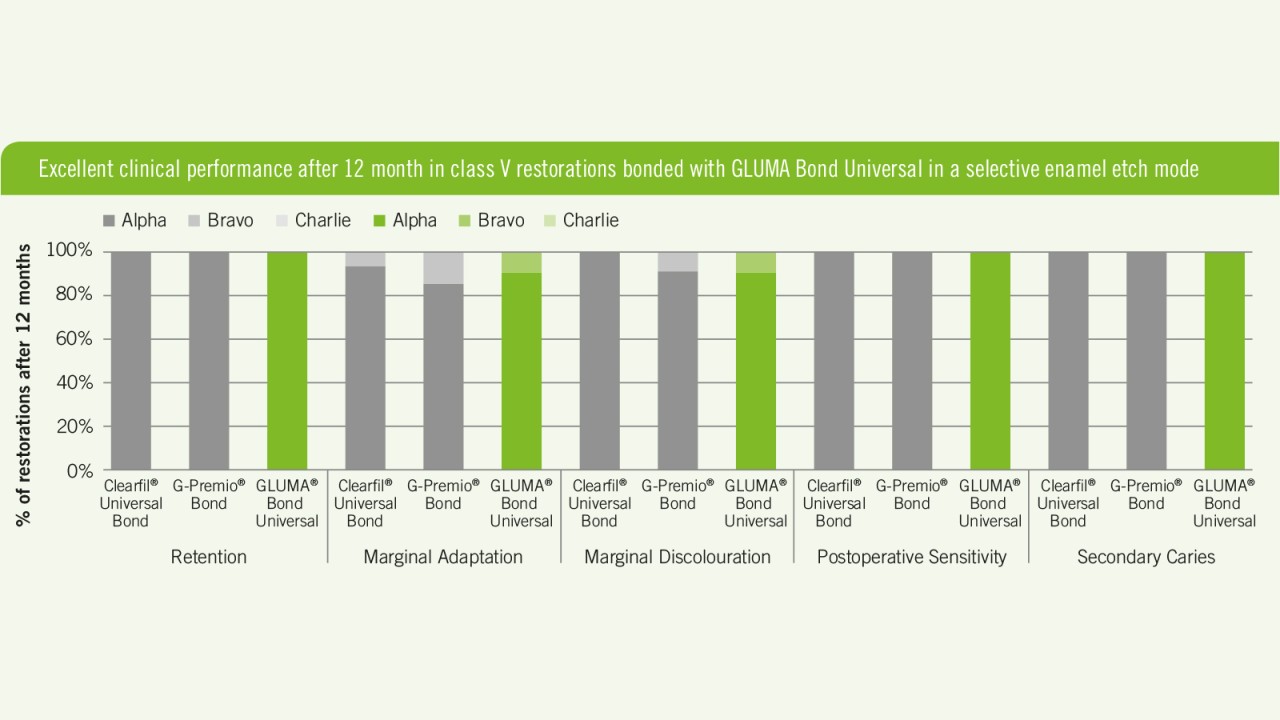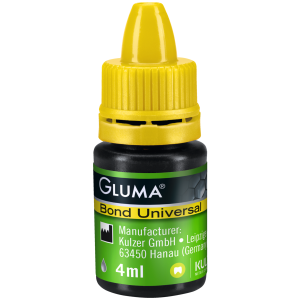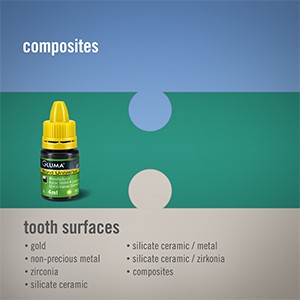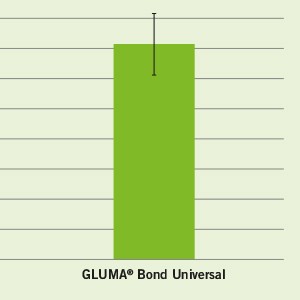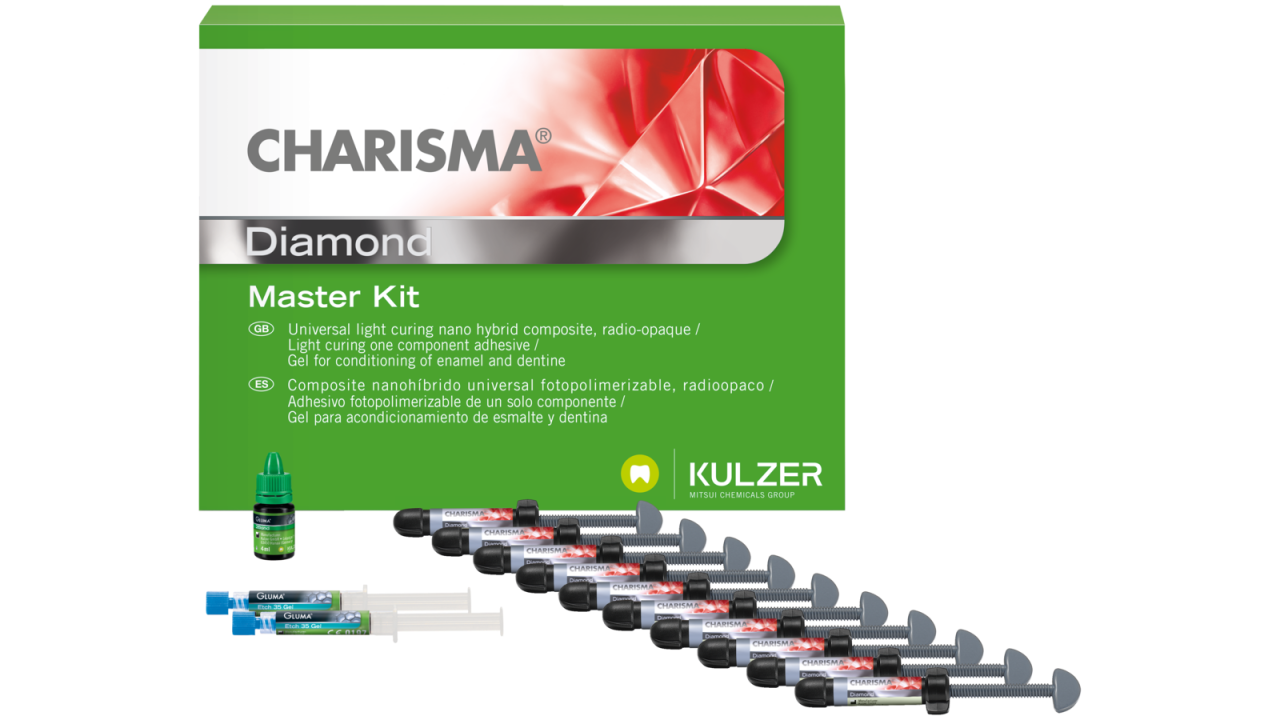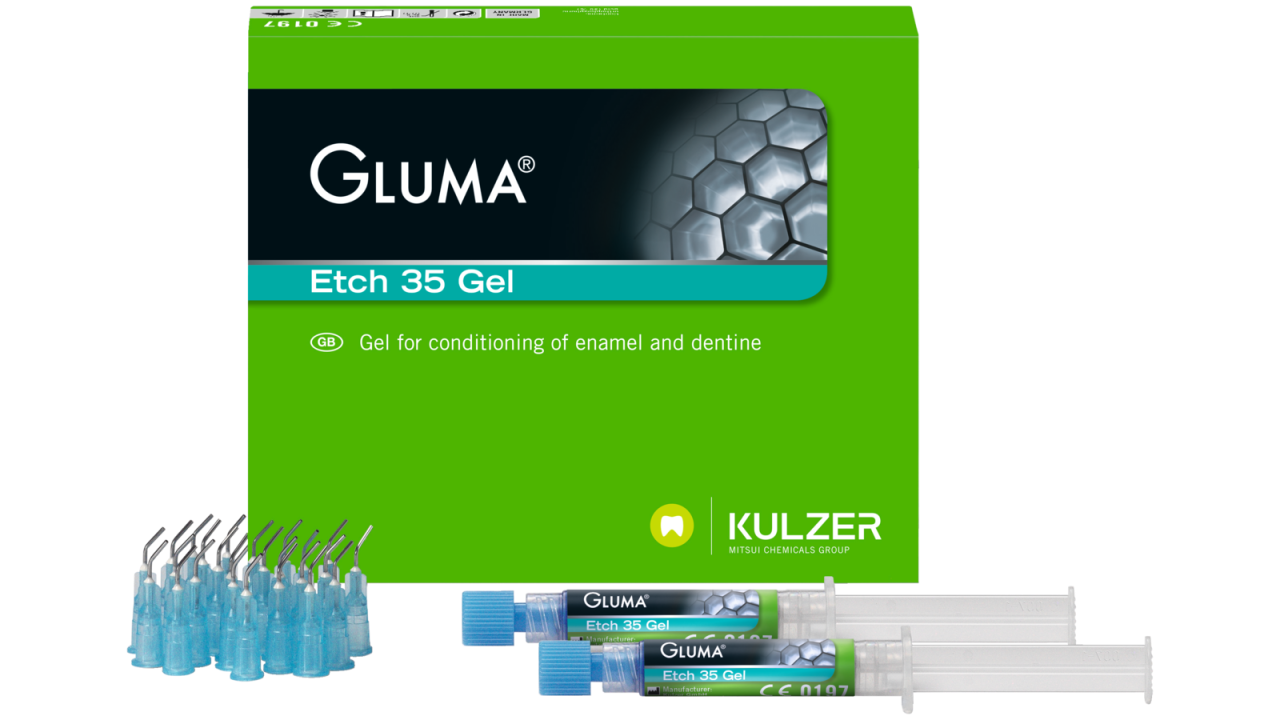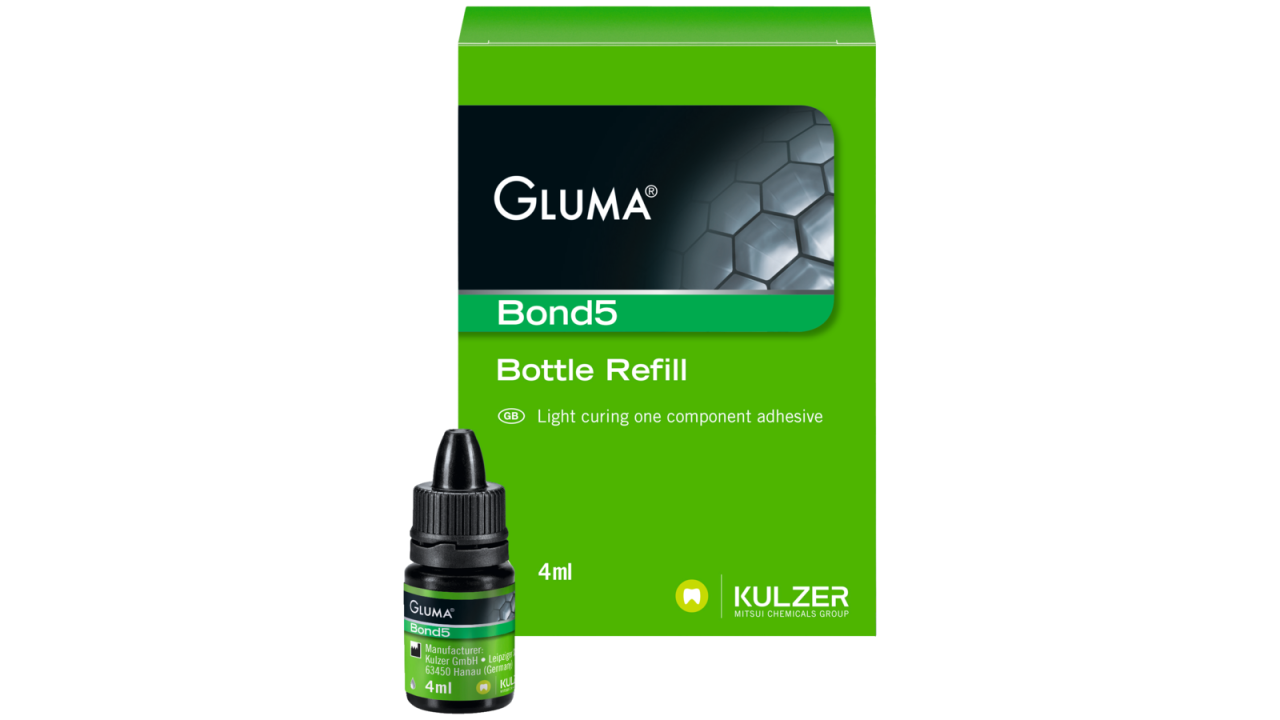Contact Kulzer International
Based on our long-term bonding expertise, we developed GLUMA Bond Universal – a universal bonding answering to all your bonding needs. It is a reliable and highly effective adhesive that ensures successful long-term restorations.
Benefits
GLUMA Bond Universal is effective owing to its easy handling properties and the reliable bond strength. Our unique moisture control system containing MDP makes the air-drying just as easy and provides a homogeneous bonding layer. Thanks to our exclusive drop control you can be sure to apply just as much adhesive as you need. With GLUMA Bond Universal, you bond efficiently and economically and you are sure to have created the required precondition for a long-lasting restoration.
One bottle of our genuinely universal adhesive represents manifold benefits for you:
- For any bonding technique: total-etch, selective etch, and self-etch.
- For all dental materials. For bonding silicate ceramics, you precondition the restoration using GLUMA Ceramic Primer.
- For a broad range of indications of direct and indirect restorations and intraoral repairs.
- For easy and safe handling with state-of-the-art performance.
Good to know
Indications
One bottle provides the adhesive for indications of direct and indirect restorations – and for intraoral repairs of chippings and fractures.
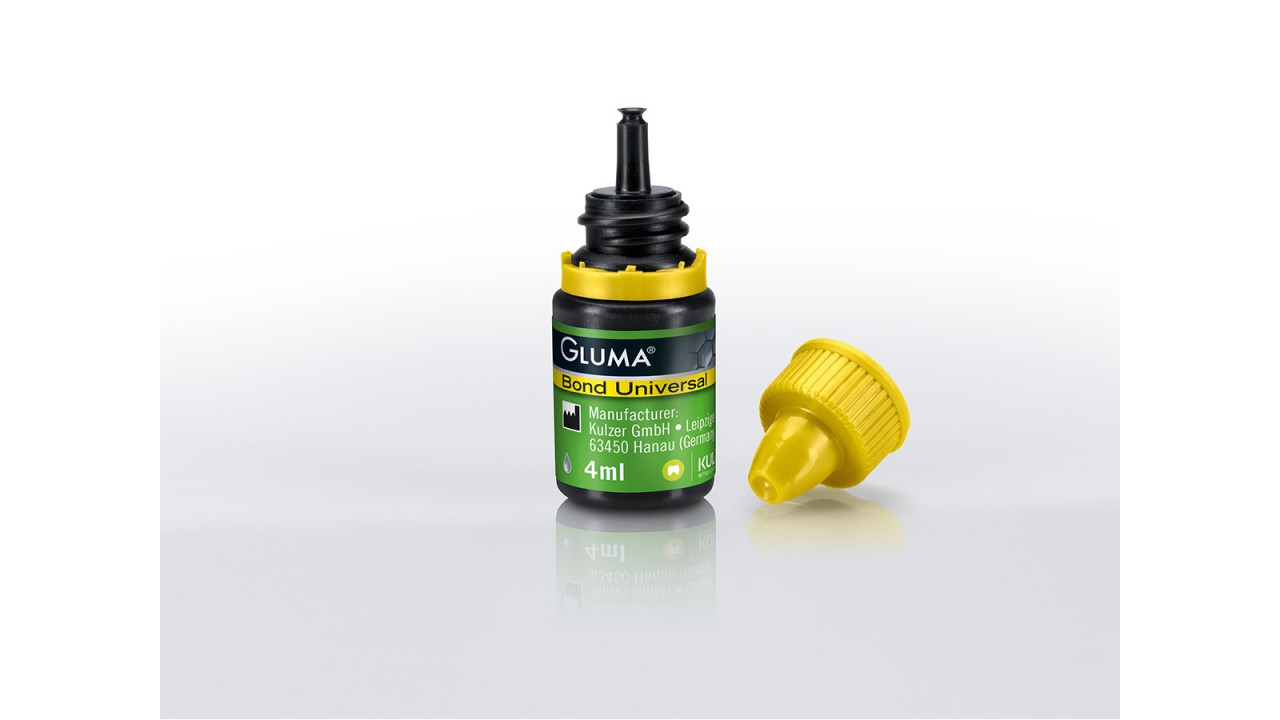
- Bonding of direct restorations for all cavity classes (Black) using light-curing, dual-curing or self-curing methacrylate-based composites / compomers
- Bonding of light-curing, dual-curing or self-curing core build-up materials.
- Sealing of hypersensitive tooth areas.
- Sealing of cavities prior to amalgam restorations.
- Bonding of fissure sealants.
- Sealing of cavities and core preparations prior to temporary cementation of indirect restorations (according to the immediate dentine sealing technique).
- Cementation of indirect restorations with light-curing, dual-curing or self-curing adhesive resin cements.
- Intraoral repair of composite and compomer restorations, porcelain fused to metal, metal and all-ceramic restorations.
Applications
Step-by-step intraoral repair of silicate/ glass ceramics GLUMA Bond Universal
- Enables tooth-preserving treatments.
- No need to use hazardous hydrofluoric acid intraorally on the glass/silicate ceramic
Step-by-step intraoral repair of zirconia-based restorations
- Zirconia must not be etched using phosphoric acid either!
Intraoral Repair
Discover the effectivness of intraoral repairs!
Repairs help preserve sound tooth structure and prove to be a safe and effective procedure that can save time and money with relatively minor effort. GLUMA Bond Universal is ideal for intraoral repairs.
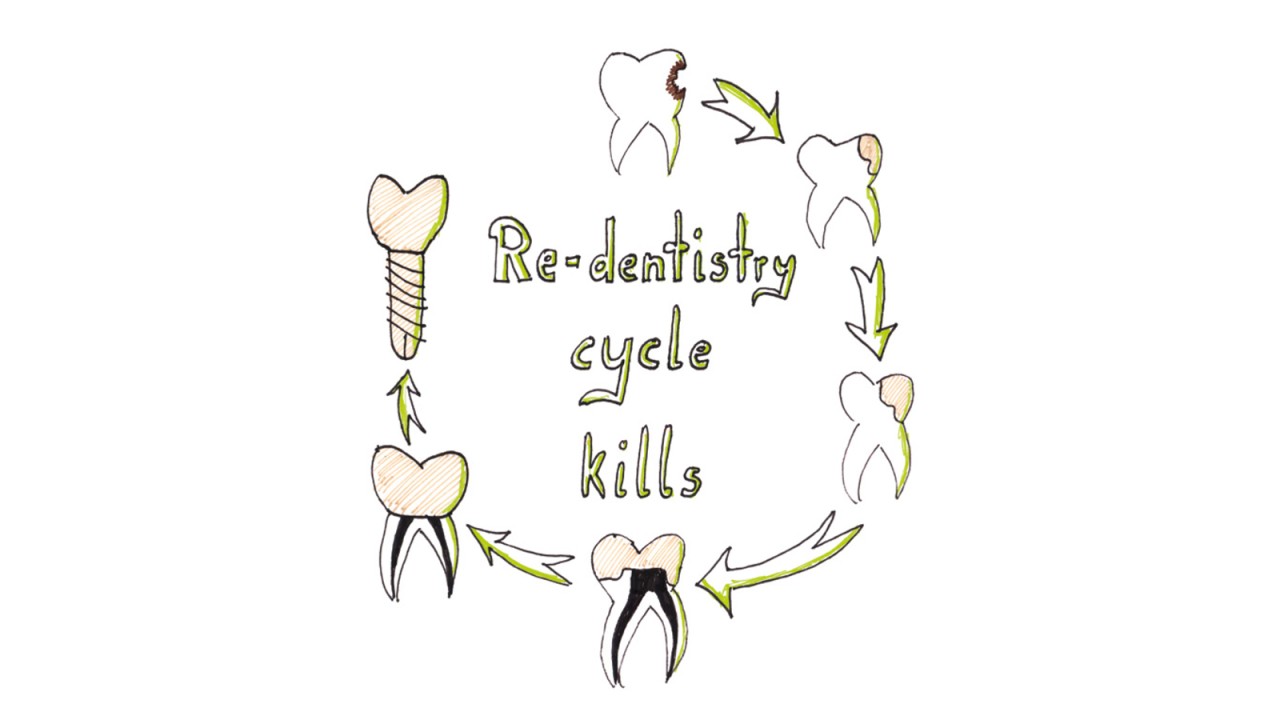
Why are repairs preferable to replacements?
Localised restoration defects, such as fractures and chippings, often still result in the replacement of the total restoration. Yet, recent clinical studies show that repairs are a state-of-the-art treatment of localised restoration defects.
They help preserve sound tooth tissue and prolong the restoration lifecycle, as every replacement destroys more sound tooth structure.
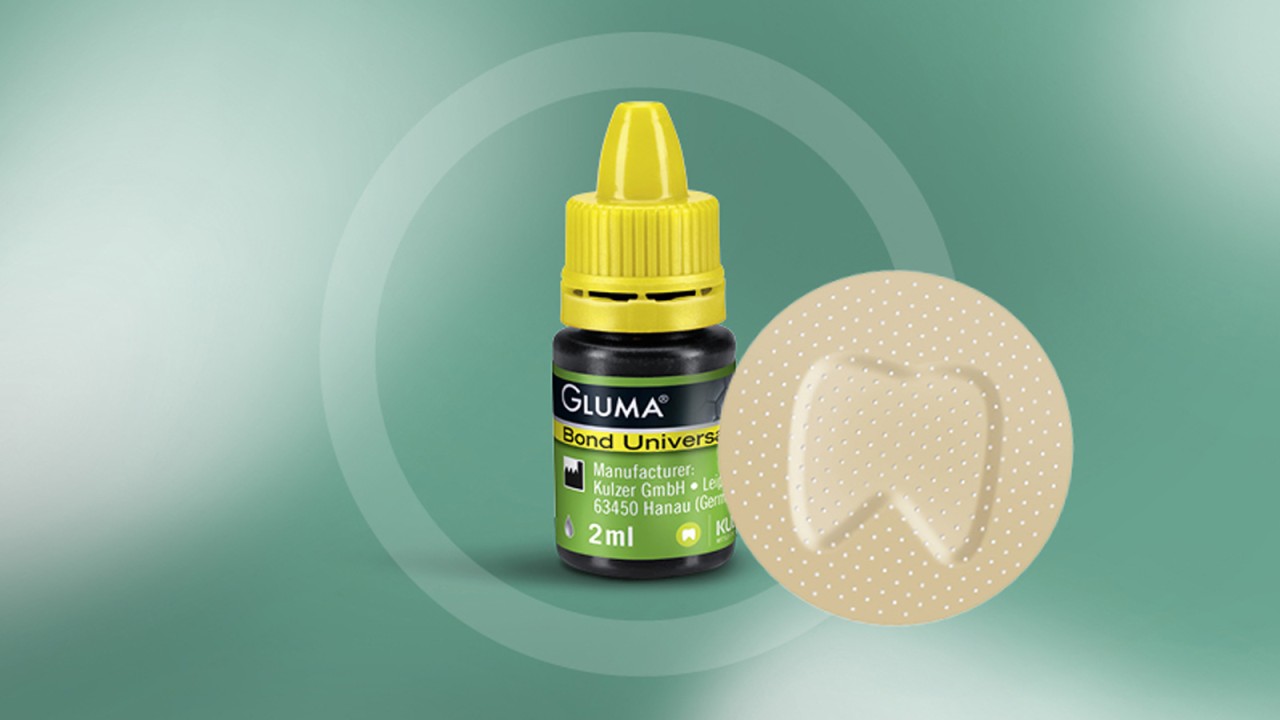
Why is GLUMA Bond so ideal for intraoral repairs?
- Preserve sound tooth tissue
- Just one bottle for most materials
- No need to apply hazardous hydrofluoric acid
- Minimally-invasive and cost-effective solution
The intelligent formula of GLUMA Bond Universal contains MDP and provides instant and reliable bond strength. Scientists from Europe and Japan have cooperated in order to equip our clients with a bonding that combines the best of two worlds. The different components interact to allow effective etching, good penetration into the dentinal tubules, durable and consistent bond strength as well as optimal bonding to ceramic, metal and tooth surface.
CLINICAL STUDY
A clinical study from the University of Leipzig reveals: after two years of clinical service, restorations using GLUMA Bond Universal in all etching modes showed higher clinical survival compared to the 3-step etch-and-rinse control group. Read the complete study here:
FAQ
For which indications can GLUMA Bond Universal be used?
It can be used for the bonding of direct restorations for all cavity classes (Black) using light‐curing, dual‐curing or self‐curing methacrylate based composites / compomers. Furthermore it can be used for the bonding of light‐cure, dual‐cure or self‐curing core build‐up materials. Hypersensitive teeth can be sealed, as well as prepared tooth prior to the placement of amalgam. The sealing of core preparations can also be performed prior to the temporary cementation of indirect restorations (according to the immediate dentine sealing technique). It also allows for the bonding of fissure sealants. Additionally it can be used for the cementation of indirect restorations with light‐cure, dual‐cure or self‐curing adhesive resin cements. Last but not least, GLUMA Bond Universal enables dentists to perform intra‐oral repairs to composite and compomer restorations, porcelain fused to metal, all ceramic, as well as metal restorations.
What is the advantage of acetone used in GLUMA Bond Universal?
Acetone acts as a water chaser and enables a fast and secure evaporation of water, which is required for a durable and consistent bonding system.
Water is always present during cavity preparation and is also an important component in adhesives to achieving efficient etching of the tooth. After application and etching, both the water and solvent have to be optimally removed to enable efficient adhesive layer polymerisation throughout the light curing process.
Acetone as a solvent, with very high air pressure, supports this evaporation process. Therefore this acetone/water system ensures an optimal polymerisation result and thereby maximising bond strength.
What is “moisture control”?
The “moisture control”- system of our unique formula ensures a fast and reliable evaporation of water due to the usage of acetone as the solvent.
What is special about GLUMA Bond Universal compared to competitors so called ‘universal’ products?
GLUMA Bond Universal can be used in the self‐etch, selective etch or total‐etch technique. This enables the dental practitioner to use his preferred etching technique. GLUMA Bond Universal is compatible to self‐, dual‐ and light‐ curing materials.
GLUMA Bond Universal can be used for bonding of direct and indirect restorations with different surfaces (e.g. silicate ceramics*, zirconia, precious and non‐precious alloys and composites.) *also use GLUMA Ceramic Primer.
Why is it difficult to compare ‘universal’ adhesives?
Every manufacturer has a different understanding/definition of ”universal” features. Our definition: GLUMA Bond Universal offers the choice between different bonding techniques, ensuring the compatibility to light‐, self‐ and dual‐curing materials without the need of a dual cure activator, bonding of composites/compomers, ceramics*, non‐precious metals and precious metals, while having just one liquid for a broad range of indications. *also use GLUMA Ceramic Primer.
What etching techniques can be used with GLUMA Bond Universal?
GLUMA Bond Universal can be used with selective enamel etch, self‐etch or total etch technique.
To which kind of material is GLUMA Bond Universal compatible?
GLUMA Bond Universal is compatible to most dental materials. It is compatible with light‐, self‐ and dual‐cure materials without the need of a dual‐cure activator.
Which surfaces can be bonded with GLUMA Bond Universal?
GLUMA Bond Universal can bond to the following surfaces: zirconia, precious and non‐precious alloys as well as composites/compomers. To bond and repair silicate ceramics, apply GLUMA Ceramic Primer.
What is the pH of GLUMA Bond Universal?
The pH value of GLUMA Bond Universal is 1.6 – 1.8.
For which material does GLUMA Bond Universal require a primer?
GLUMA Bond Universal requires GLUMA Ceramic Primer on silicate / glass ceramics
Why is a primer for silicate/glass ceramic required?
The adhesive monomer that is necessary to securely bind with silicate substrates is not stable in acidic solutions like GLUMA Bond Universal. This is why a separate primer is required.
Can I buy the GLUMA ceramic primer separately?
Yes, GLUMA Ceramic Primer (1x4ml) is available as a refill: (article code: 66061425)
Can I use an etchant prior to the application of GLUMA Bond Universal?
Yes, you can. GLUMA Bond Universal can be used in the selective enamel etch or total etch technique, as well as in the self‐etch mode.
What are the advantages of the new dropper?
With our drop control system, you apply just as much bonding agent as is required. The notched bottle design economises on the output of bonding agent and allows an efficient, controlled application of the adhesive.
How many applications can be covered with a bottle of GLUMA Bond Universal (4ml)?
The amount of single drops goes up to 220 per 4ml bottle
What is the film thickness?
GLUMA Bond Universal forms an adhesive layer with a film thickness of approx. 5‐10μm.
Can I use GLUMA Bond Universal to treat hypersensitive teeth?
Yes, you can seal hypersensitive teeth with GLUMA Bond Universal. The desensitising effect comes from the complete sealing of the tooth by the adhesive, as well as our monomer formula.
How long can the bottle remain open?
We recommend screwing the bottle top back on to the bottle immediately after use. This is to prevent the evaporation of the GLUMA Bond Universal solvent within the bottle.
How should GLUMA Bond Universal be stored?
GLUMA Bond Universal can be conveniently stored at room temperature <25°C and in a standing position.
What is the time required to apply GLUMA Bond Universal?
Depending on the etching technique, GLUMA Bond Universal should not require more than 35s for the self‐etch‐ and no more than about 90s for the total etch‐ or selective enamel etching technique.
Does GLUMA Bond Universal need to be light‐cured?
Yes, the curing time is only 10s.
What is the benefit of using GLUMA Ceramic Primer for intra‐oral repair?
For the intra‐oral repair of silicate ceramic surfaces, hydrofluoric acid (HF) is often used. Hydrofluoric acid is known to be hazardous and dangerous when used in the mouth and can burn soft tissue. When using GLUMA Ceramic Primer, HF treatment is not required, as excellent adhesion is obtained.
Does GLUMA Bond Universal need to be shaken before use?
There is no need to shake GLUMA Bond Universal prior to use.
How long do I need to air-dry GLUMA Bond Universal?
The dentist needs to completely evaporate the solvent (acetone) to ensure the best adhesion possible. Air-drying needs to continue until the adhesive layer does not move any longer under the air pressure. Air-drying should always be applied from the outer parts of the cavity. Then gradually air-dry towards the centre of the cavity with increasing strength. The adhesive layer cannot be over-dried. It is better to exceed the air-drying time than risk under drying.
How much adhesive do I need for a cavity?
Apply a sufficient amount of adhesive to cover the entire cavity. Make sure GLUMA Bond Universal adhesive completely covers the corners, as well as relatively inaccessible areas of the tooth preparation. Ensure that all cavity margins are effectively covered with the GLUMA Bond Universal adhesive.
After air-drying the entire cavity, the adhesive layer should look 100% glossy. If this is not the case and there are ‘matt’ patches, apply a second layer, following the same application procedure.
How do you apply GLUMA Bond Universal?
To ensure optimum adhesion, GLUMA Bond Universal needs to be painted onto the tooth, then gently rubbed for 20s.
Why does GLUMA Bond Universal need to be gently rubbed throughout application?
The tooth conditioning ingredients (monomers) need to come in contact with the tooth surface for the demineralisation, as well as priming and bonding to take effect. The continual rubbing motion pushes fresh monomers to the tooth surface, ensuring an excellent marginal seal combined with a high bond strength.
How long does it take to light cure GLUMA Bond Universal and what should the dentist look out for?
GLUMA Bond Universal requires 10s of light-curing using a conventional curing lamp (> 500 mW/cm2, wavelength range 440- 480 nm).
Regularly check the emitted intensity of the light curing unit. Also check the correct positioning of your light tip (as close and direct as possible, without touching the adhesive/restorative/tooth surface). We recommend the wearing of appropriate orange safety glasses to avoid eye damage from the blue light. The safety glasses will allow you to see that the tip is in the correct position throughout the curing process.
Is GLUMA Bond Universal radiopaque?
No. Radiopacity is not applicable with a maximum film thickness of 10 µm. It is impossible to detect such thin layers by x-ray.
What makes GLUMA Bond Universal compatible with self-cure materials?
Compatibility to self-cure materials is attained, due to our optimised initiator system. The optimal water/solvent evaporation, due to the acetone ingredient, additionally supports self-cure compatibility.
Why does GLUMA Bond Universal contain 4-META and MDP as adhesive monomers?
From our long lasting experience, 4-META exhibits optimal wetting behaviour of tooth hard tissue and thereby supports homogeneous film formation and reliable bond strengths. Notably on dentine, 4-META is well documented to show extremely powerful adhesion.
The bond strength is additionally enhanced by MDP, as second adhesion promoter. MDP as chain-like monomer, has very good hydrophobic characteristics, making it highly effective especially on enamel, metal and oxide ceramics.
The balanced combination of the above adhesion promoters gives the dentist a reliable bonding agent for optimal adhesion to the tooth.
Does sclerotic dentine need a special pre-treatment?
GLUMA Bond Universal can also be used on sclerotic dentine. We recommend its usage with the total etch technique. Sclerotic dentine is a harder substrate than normal dentine, therefore etching of the entire cavity, using phosphoric acid for 30s, is recommended.
What pre-treatment is necessary to the preparation, and/or tooth, when repairing a restoration?
Roughen the surface of the substrate to be repaired using a diamond bur or sandblasting. Rinse thoroughly and dry with an oil-free air flow. In case of silicate and glass ceramics, the restoration surface needs to be pre-treated with GLUMA Ceramic Primer.
Follow this by applying GLUMA Bond Universal in a gentle rubbing motion for 20s, air-dry and light cure for 10s prior to application of the composite.


